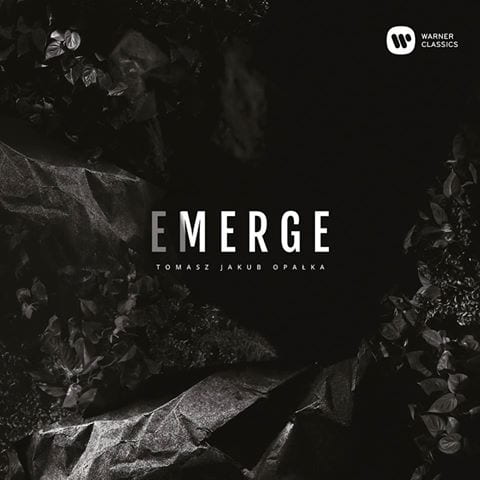EMERGE
Tomasz J. Opałka (b. 1983): Collisions of the Matter, Emerge, DNA, Quadra
Sinfonia Iuventus, Krzysztof Słowiński – cond.; Polish Radio Orchestra, Łukasz Borowicz – cond.; Warsaw Philharmonic Orchestra, Wojciech Michniewski – cond.
Warner Classics (Dec 12, 2016); Available on empik.com
On December 12, Warner Classics will release Tomasz J. Opałka’s first monographic CD at the headquarters of Warner Music Poland in Warsaw. Entitled “Emerge,” the album contains four rich symphonic works for orchestra: Collisions of the Matter, Emerge, DNA and Quadra. Each piece featured in the album has its own unique history and are accounted for as a sort of breakthrough in thinking about both harmony, structure, and about the conduct of the musical narrative.
Opałka is considered to be one of the most distinctive composers of his generation for being able to capture the emotionality and energy of his works, keeping the listener’s attention from the first to the last note. His music is distinguished by dynamism, sensitivity to sound, sophisticated orchestration and innovative research in the area of harmony. Opałka’s bold experimentation goes beyond the theoretical trends, where he combines various influences and inspirations, distancing themselves from both conceptualism and postmodernism. The basis is creative intuition combined with conscious compositional workshop, attention to structure, form and narrative course of the composition.
 SEQUENZA
SEQUENZA
Grażyna Bacewicz: II Sonata for violin solo (1958), Krzysztof Penderecki: Cadenza for violin solo (1987), Luciano Berio: Sequenza VIII for violin solo (1976), Tomasz Jakub Opałka: Fil d’araignée for violin (2014), Dariusz Przybylski: Up for violin solo (2015), Eugène Ysaÿe: Violin Sonata in E Major, Op. 27, No. 6 (1923-1924), Bjarne Brustad: Eventyrsuite for violin solo (1932)
Janusz Wawrowski – violin
Warner Classics (Oct 20, 2016); Also available on amazon.com
Polish violinist Janusz Wawrowski’s second Warner Classics album, Sequenza, was released in October. Following the success of his previous albums Aurora and the Paganini Caprices, this new release takes its title from the infamous ‘unplayable’ Sequenza by Italian composer Luciano Berio. The repertoire on this album contains 20th and 21st century violin music from composers, such as Penderecki and Bacewicz, as well as pieces written specifically for Wawrowski. It features two world premiere recordings: Tomasz Opałka’s Fil d’araignée and Dariusz Przybylsk’s Up.
The album marks a bold departure for Wawrowski, with little-known and often pioneering repertoire for solo violin, enabling him to explore the broadest possible scope for original interpretation with the full spectrum of technical craftsmanship and the challenges of the violin – the intimate act of playing solo, armed only with exceptional technique and deep insight into the music in some of the most demanding repertoire ever written for the instrument.

ROMAN PALESTER. PIANO & CHAMBER MUSIC
Roman Palester (1907-1989): Duos for two violins, Sonata for 2 violins, Piano and Polish Dance for violin and piano (fragment from the ballet Song of the Land)
Jakub Tchorzewski – piano, Duo Viennese (Paweł Zalejski – violin, Monika Hager-Zalejski – violin)
Warner Music Poland (December 2, 2016)
On December 2, a new recording by Roman Palester will be released at the PWM Edition office in Warsaw during the promotional meeting and concert. The composer’s music is largely absent from Polish musical life today, though he was one of the greatest composers of his generation. In 1950, Palester emigrated from Poland to France, resulting in the censorship office banning his name. He was erased from the member list of the Polish Composers’ Union, performing his music was prohibited and the mention of him disappeared from encyclopedias, dictionaries, publishers’ catalogues and all kinds of publications.
[Sources: facebook.com, centrumprasowe.pap.pl, polmic.pl]
